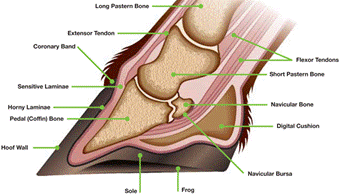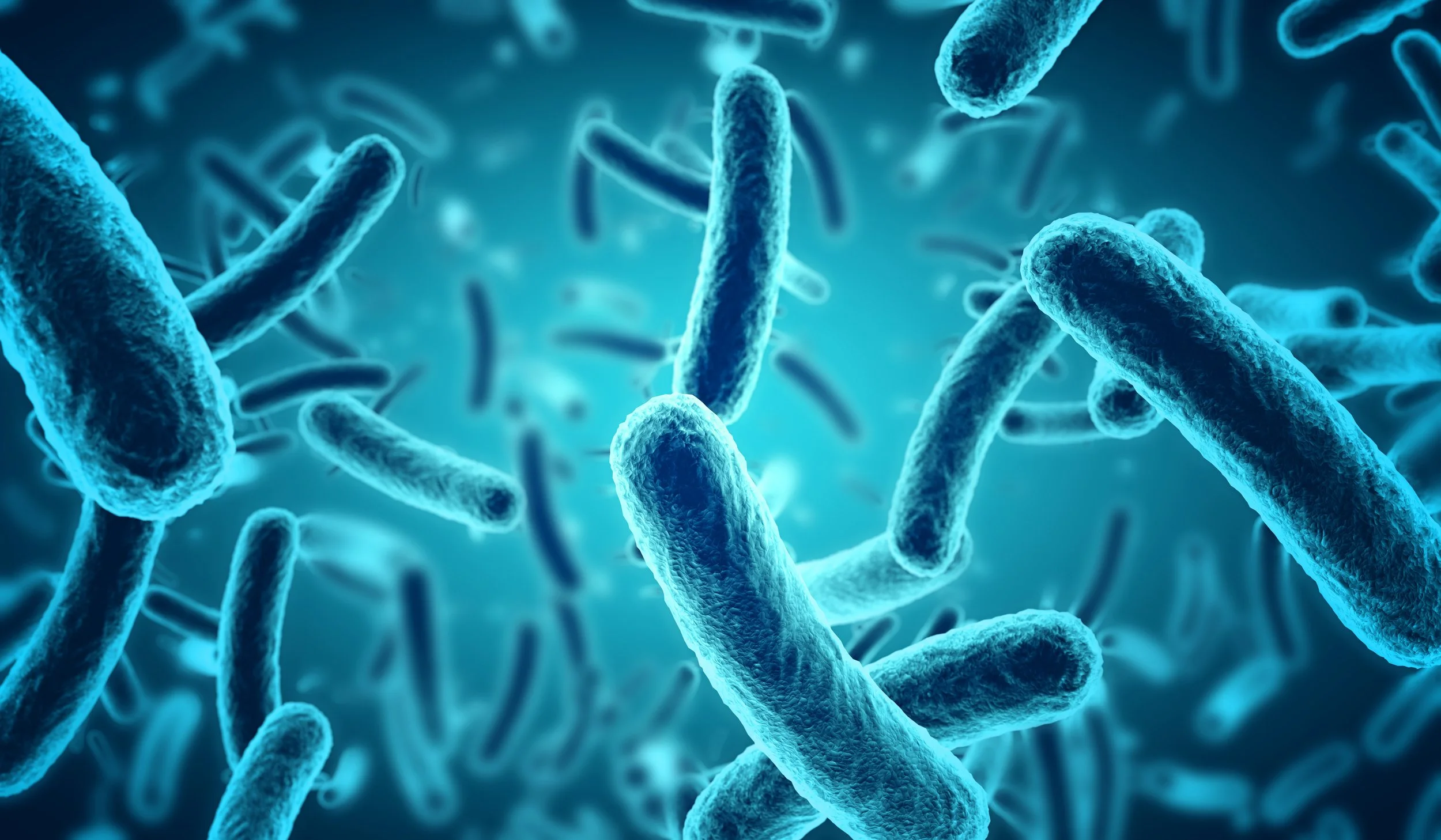Feeding and Caring for Laminitis
Warmer temperatures and lighter evening means spring is here and whilst this season brings many lovely things, it also brings the risk of laminitis, which is synonymous with increased access to fresh grass. In this blog post, in which I will explain, what laminitis is, how it occurs and how you can help reduce the risk to your horse through the right feed and nutrition.
Laminitis is an extremely painful condition of the equine hoof, which in its simplest sense is inflammation of the lamellae of the inner hoof wall. But laminitis isn’t a condition of the hoof as such, its more the result of a previous physiological event that is just expressed in the feet.
The specific pathways that result in laminitis are complex and still not fully understood, but nutritionally speaking, laminitis is normally either Sepsis Related (SRL) or Endocrinopathic. Endocrinopathic laminitis is the most common cause of laminitis, responsible for more than 80% of cases reported.
Endocrinopathic Laminitis
Endocrinopathic laminitis describes the type of laminitis linked to metabolic (Equine Metabolic Syndrome/Insulin Dysregulation/Obesity) or hormonal (PPID) conditions. This type of laminitis can be strongly linked to obesity, which commonly leads to EMS and Insulin Dysregulation.
However, not all horses and ponies with EMS and Insulin Dysregulation are overweight and many horses and ponies with EMS are genetically predisposed to this condition, regardless of their weight. Horses and ponies with PPID (Cushing’s Disease) are also commonly affected with insulin dysregulation leading to an increased risk of endocrinopathic laminitis.
The specific pathology of Endocrinopathic laminitis is not fully understood, but the laminitis itself is often the result of hyperinsulinaemia, which simply means there is too much insulin circulating in the blood. When a horse consumes simple sugars like glucose and sucrose, insulin is released from the pancreas which stimulates the movement of these sugars from the blood into the cells.
However, a horse or pony with insulin dysregulation loses their sensitivity to insulin and becomes insulin ‘resistant’. This causes the production of more and more insulin in a bid to shift the sugar into cells, which then results in a state of Hyperinsulinaemia and potential for laminitis.
Pasture Associated Laminitis (PAL) is a type of endocrinopathic laminitis common in spring. associated with time spent on sugar rich, spring pasture. Consumption of higher levels of sugars from grass and the response of horses and ponies to them, especially those who are predisposed or already have EMS or PPID, can invariably lead to hyperinsulinaemia and result in PAL.
Sepsis Related Laminitis
Sepsis related laminitis (sometimes called ‘Inflammatory laminitis’) is the type of laminitis that can result from a horse or pony consuming excessive levels of starch in cereals (think the classic case of a pony breaking into the feed room!) or fructans in grasses, both of which are storage forms of sugar.
Whilst horses and ponies generally wouldn’t consume enough fructan to cause problems within a typical day, making the so-called ‘fructan theory’ of laminitis less likely, some research has shown that some horses and ponies can consume up to 5 percent of their body weight in grass dry matter (DM) per day. If that grass was higher in fructans, then a horse or pony consuming 5% of their bodyweight could easily eat enough to pose a risk for potentially developing laminitis.
Horses are unable to digest fructans with enzymes in their small intestine and have limited ability to digest starch. Excess starch and fructans will then pass into the hindgut for fermentation by hindgut microbes. If the levels of starch or fructan are high, their rapid fermentation will cause a significant drop in the hindgut pH and result in a state of acidosis.
Hindgut acidosis will cause the death of certain microbes who release toxins when they die, inflammation and deceased permeability of the gut wall, allowing the passage of endotoxins and other harmful compounds into the bloodstream. The result of this is inflammation within the body and general signs of illness like diarrhoea, which eventually ends with laminitis.
Reducing The Risk Of Laminitis
The good news is that managing the diet to promote recovery and avoid the events that can lead to laminitis, can help keep it under control. Follow these essential tips to help your horse or pony get the right nutrition to combat laminitis:
Base The Diet On Low Sugar/Starch Forage
For most laminitic horses or ponies, field turnout needs to be restricted but laminitic horses should also not be turned out on to ‘stressed’ pasture, for example, short stubbly grass.
Plants produce sugars mainly during the day, so the best regime to avoid this is to turn the horse or pony out from night to early morning, bringing them off the grass in the daytime when sugars are highest.
Laminitic horses and ponies should never be starved whilst off grass but fed an alternative form of forage to keep their digestive system functioning well and if weight loss is needed, then forage can be reduced to 1.5% of bodyweight per day.
Forage should be low sugar/starch so it’s good to have it analysed. A typical analysis will show WSC (water soluble carbohydrates or simple sugars + fructan), ESC (ethanol soluble carbohydrates or simple sugars – fructan) and starch. These analyses enable more specific nutritional management particularly if the laminitis is endocrinopathic, where the ESC levels are important.
NSC (non-structural carbohydrates i.e., starch plus sugar) can be calculated from adding all 3 measurements together. The ideal NSC for forage fed to laminitics or to avoid laminitis is <10% but this can often be quite difficult to find so <12% is often a more realistic figure.
If the NSC of the forage is above 10-12%, soaking is often recommended to reduce sugars, but research has shown that it can be ineffective in reducing the WSC to a safe level for laminitis.
Steaming hay has shown some reduction in WSC which could make it useful for a hay whose NSC is only just over the safe level (10-12%). Alternatively, feeding specifically produced low NSC (<10-12%) hay is an ideal solution for the laminitic horse or pony.
Provide Additional Fibre
High sugar and starch feeds i.e., cereals should be avoided so high fibre chaffs, ideally <10% sugar and starch can be fed to carry supplements or balancers and to provide a small bucket feed if desired.
Additionally, if your horse or pony isn’t overweight, and needs energy for work, unmolassed sugar beet is very low in starch and sugar and provides a beneficial source of highly digestible fibre.
Provide Essential Fatty Acids
Omega 3 fatty acids may provide beneficial anti-inflammatory effects to help with laminitis and improve insulin sensitivity.
Linseed meal and oil are both excellent sources of Omega 3 fatty acids, showing a similar fatty acid profile to grass which a laminitic horse or pony may be missing.
Add Micronutrients
It is important to ensure laminitis prone horses and ponies are receiving a balanced diet with the correct levels of micronutrients.
Anti-oxidants such as Vitamin E are beneficial to help prevent further damage and assist recovery from laminitis, and magnesium for example, is essential for insulin sensitivity.
Lysine is the primary limiting amino acid and is often lacking in a forage-based diet. Without it, protein cannot be synthesised correctly, and the right protein is essential to help re-build damaged hooves.
Zinc and calcium are also important to support optimum hoof growth and quality. These can all be supplied through a high specification supplement or balancer.
Promote Beneficial Microbes
Hindgut microbes are critical to the health of your horse but can be lost in the events leading to laminitis. Yeast based pro and prebiotics are scientifically proven to help nurture and promote the growth of beneficial microbes.
Feeding an appropriate balancer or hoof supplement containing these will help rebuild and support heathy hindgut microbes for optimum digestive health.
Monitor Body Condition
As laminitis is strongly linked to obesity, monitoring body condition throughout the year but particularly during spring and summer when grass is higher in calories, is essential to ensure your horse doesn’t become overweight.
Using a weight tape coupled with a Body Condition Score Chart (BCS) regularly will help you to monitor weight and condition. You can then adjust your horse or pony’s diet, management, and exercise as necessary to try to maintain them at an ideal BCS of 5 on a nine-point scale.
Taking steps like this to ensure your horse or pony stays at a healthy weight and condition is key to help reduce and prevent laminitis, and as we all know, prevention is better than cure.




